Tarragona is a city with a long history, founded BC and was once the oldest Roman settlement on the Iberian Peninsula, known in those days as Tarragon or Tarraco.
At present Tarragona is a developed city, the capital of the homonymous province, one of the largest sea ports in Spain, play an important role in the economy.
However, despite its current transformation and continued development, Tarragona is known for, aside from the beaches, primarily for its historical attractions, forming an ensemble of Roman archaeological monuments included in the world heritage list of UNESCO.
The main place among the attractions of Tarragona is the Old city of Tarragona, formerly known as Upper town, or old quarter of Part Alta (Alta Part).
In this part of the city you can feel the history of Tregony and breathe in the spirit "of the old Tarraco". Here once flowed the kings and rulers, religious leaders and arbiters of fate. In this part of the city preserved the echoes of history, originating from the once mighty Roman Empire, which survived until our times in the form of remnants of fortifications (walls and towers), Roman forum and theater, as well as small squares and narrow streets lined with historic structures and the pride of Tarragona - magnificent Cathedral.
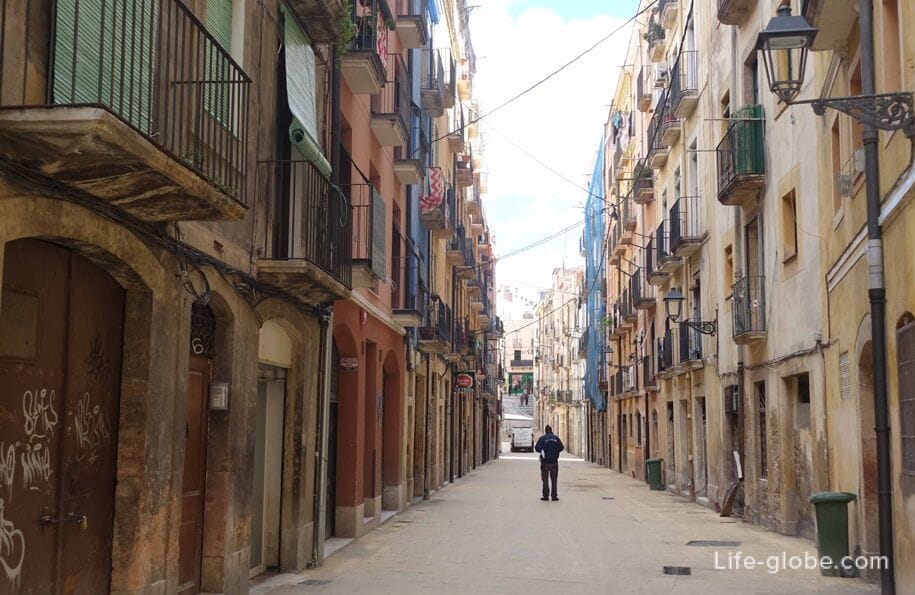
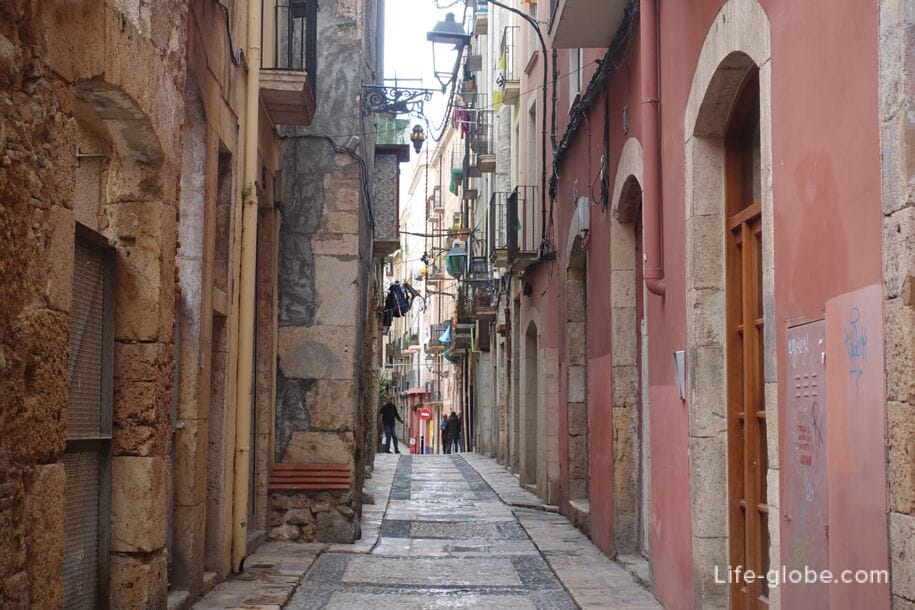
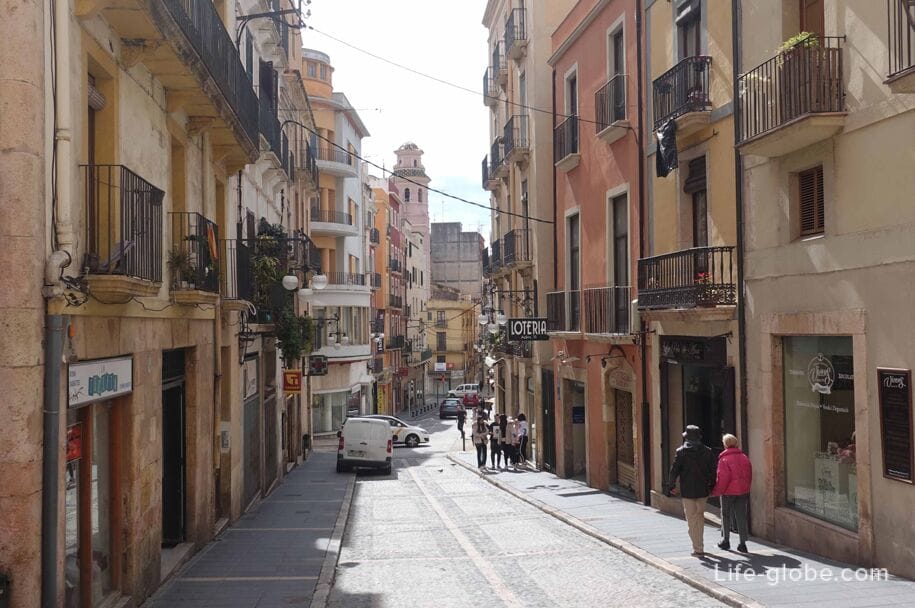


The neighbourhood is Part of Alta to the East of the Rambla Vella or Old Rambla (Rambla Vella), running parallel to the street La Rambla - the main street of "new/modern" Tarragona.
At the beginning of the Rambla Vella, virtually at the shores of the Mediterranean sea, is made for the city walls, the Roman Amphitheatre (Amfiteatre de Tarragona), built approximately in the 2nd century ad.
Initially, the amphitheater was used for two activities: battle of gladiators and fighting or hunting of animals. Later the amphitheatre was the place where executed was sentenced to death.
In our days, when the amphitheater is a small Museum exposition. Read more about Roman Amphitheatre in Tarragona...

Just above the amphitheater of the Piazza of UNESCO (Plaça de la UNESCO), on the streets of Barcelona (Passeig de Sant Antoni) are the remains of the Roman walls:
tower de Las Monjas or monks tower (Torre de les Monges), built in the second half of the 14th century together with the new section of the wall in order to convert part of the Roman structures of the circus. To defend new defensive line was built three octagonal towers. Tower of the monks, named after the monastery of the Minorite nuns, or built in 1287 on the other side of the street. The tower has a height of about 18 meters. Adjacent to the tower of Bastion appeared in the middle of the 16th century, during the reign of Charles V and named in his honor;
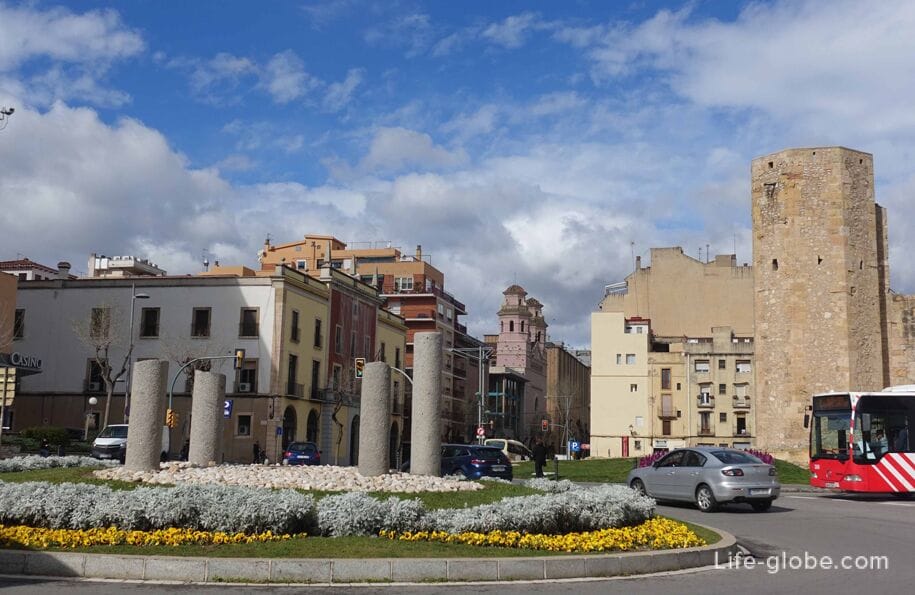
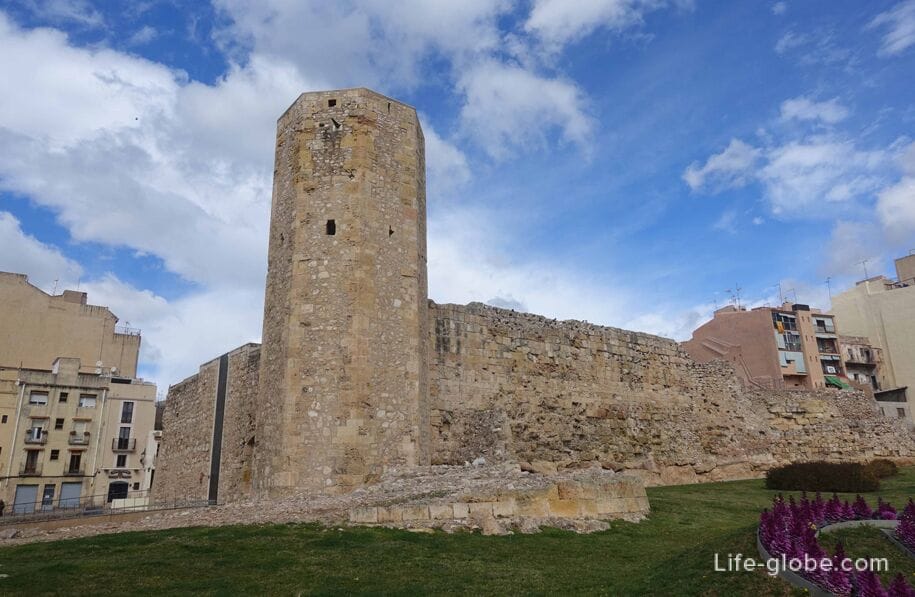
tower of Pretori (Torre del Pretori), which are the remnants of the fortress, which is now a Museum of the history of the city;
- archaeological Museum of Tarragona (Museu Nacional Arqueològic de Tarragona);
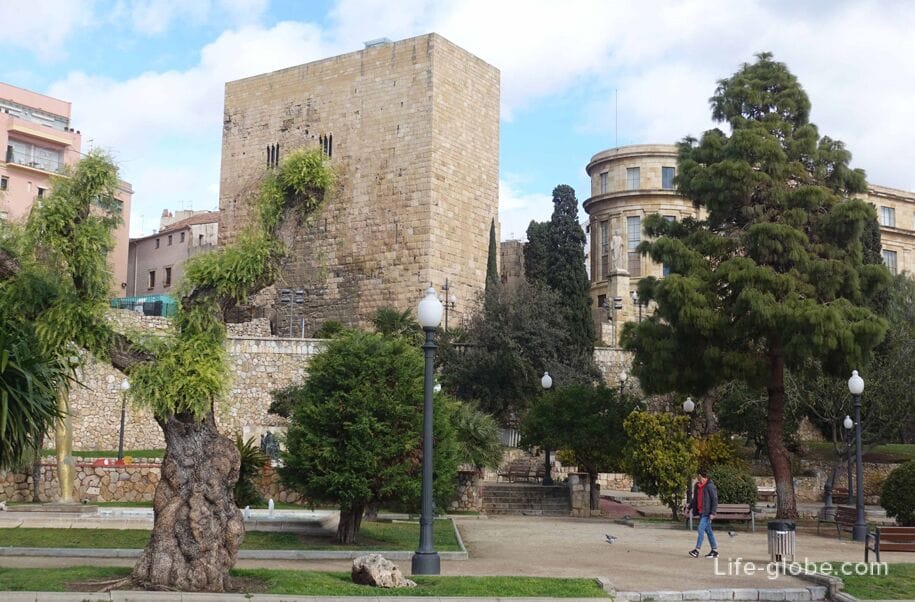
the monumental gate in the wall of Tarragona - portal de Sant Antoni (Portal de Sant Antoni). As evidenced by the inscription on the wall, the gate was built in 1737 in the Baroque style. Above the arched passage is the coat of arms of the Spanish king Philip V surrounded by two lions. Beneath it is the coat of arms of Tarragona.

Photo of the street Sant Antoni
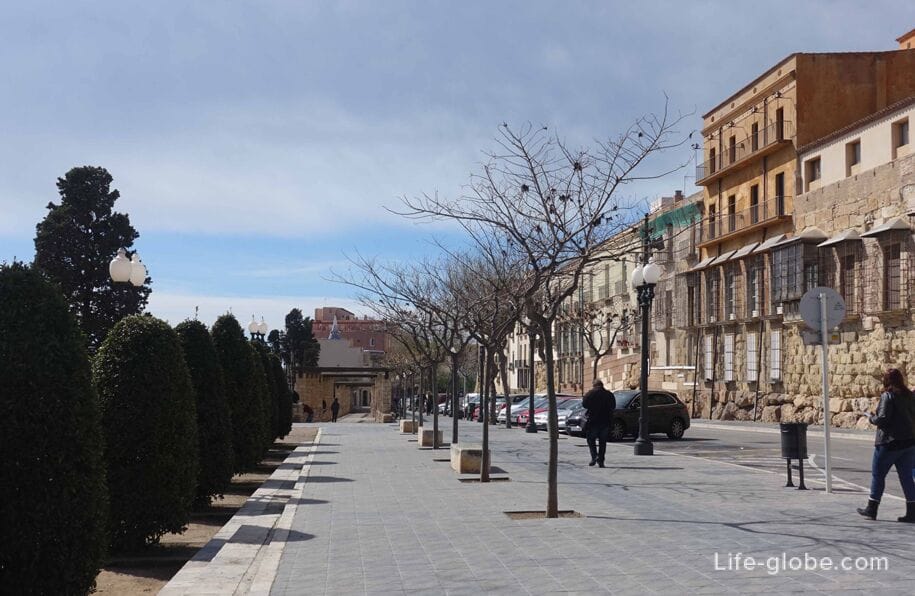
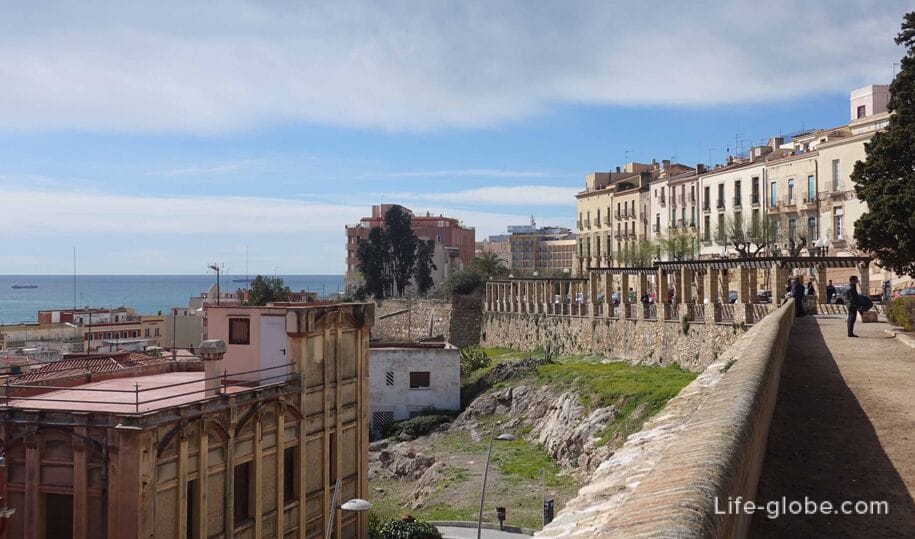
The building of the Council of Tarragona (Diputació de Tarragona)

The walls and towers from the former city Tarragon, lies one of the most famous squares of strictly the city - the Royal square or Plaza del Rey (Plaça del Rei).
In this area you can enjoy views of the Roman Praetorium to be set (what's left of it) built by Emperor Augustus, and later transformed into the so-called Royal castle, where stayed most of the Catalan kings. For this reason, the area from the end of the 15th century, known as the king.
Museum of the history of the city. The Museum entrance fee: a ticket to visit one attraction to 3.30 Euros, a single ticket to visit all the sites of the old town (museums, monuments) to 11.05 Euros, a ticket to visit the 4 places of 7.40 Euros. The rates are also valid for the circus, and other attractions forums - the Provincial and located in the lower part of the Rome city - Colonial.

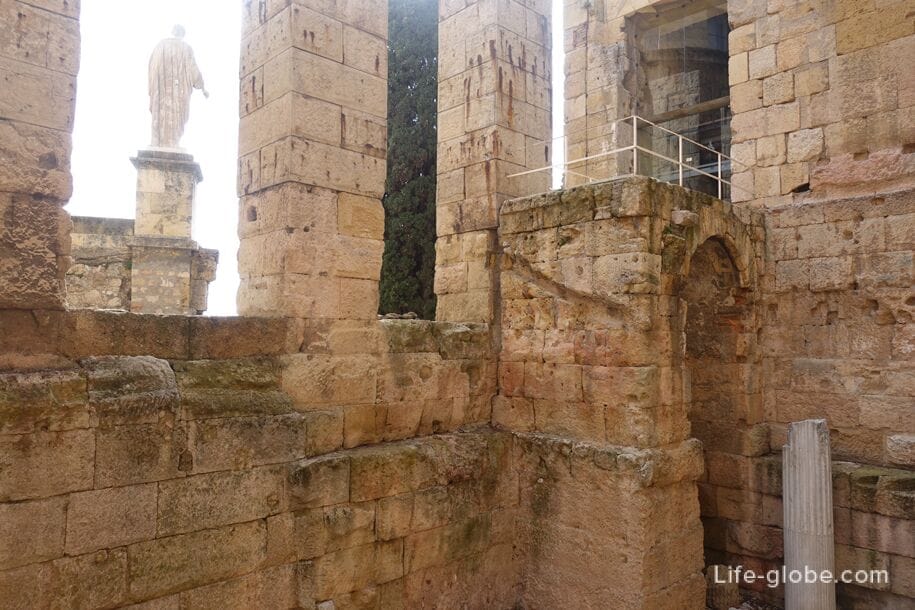
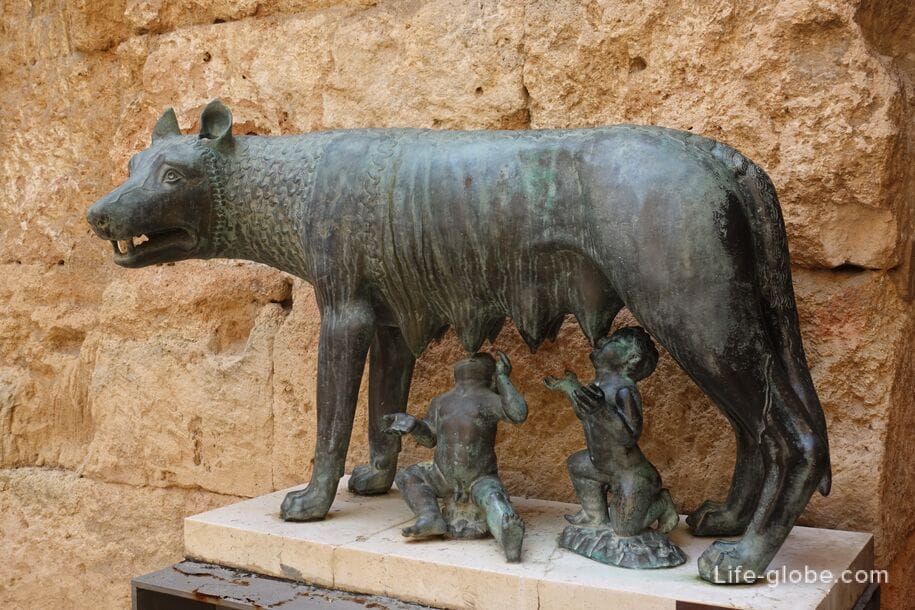
Views of the coastal part of Tarragona with a defensive wall

Also in the square is the Church of Nazareth (Església de Natzaret) of the 16th century and the parish of the Holy Trinity (Santísima Parròquia de la Trinitad), and is the meeting place of the "mystery" involved in the procession of the Holy Burial during Holy week.
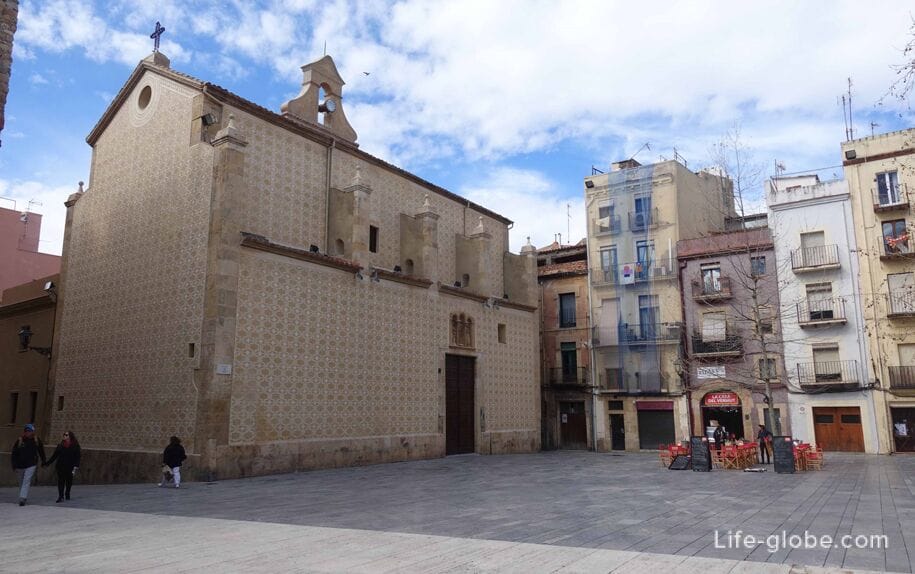
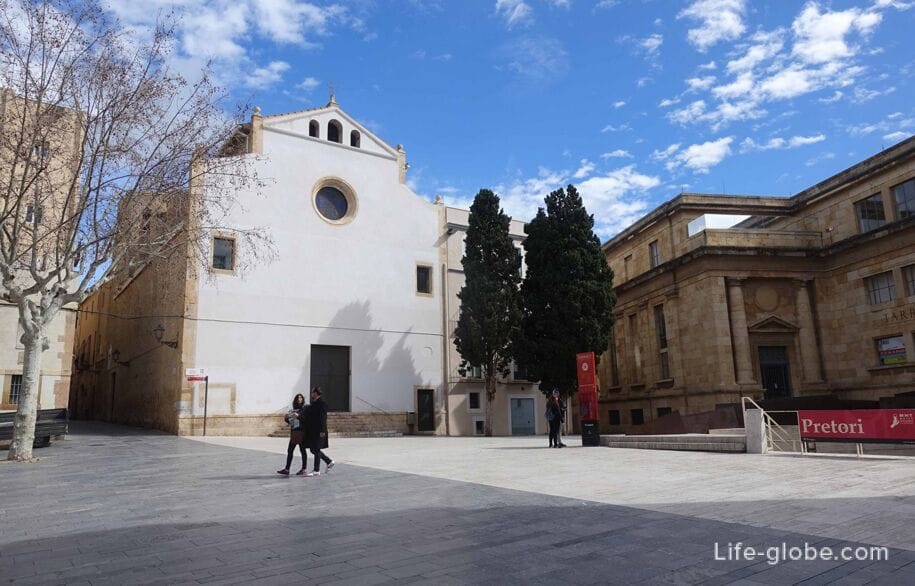
Photos of Royal square
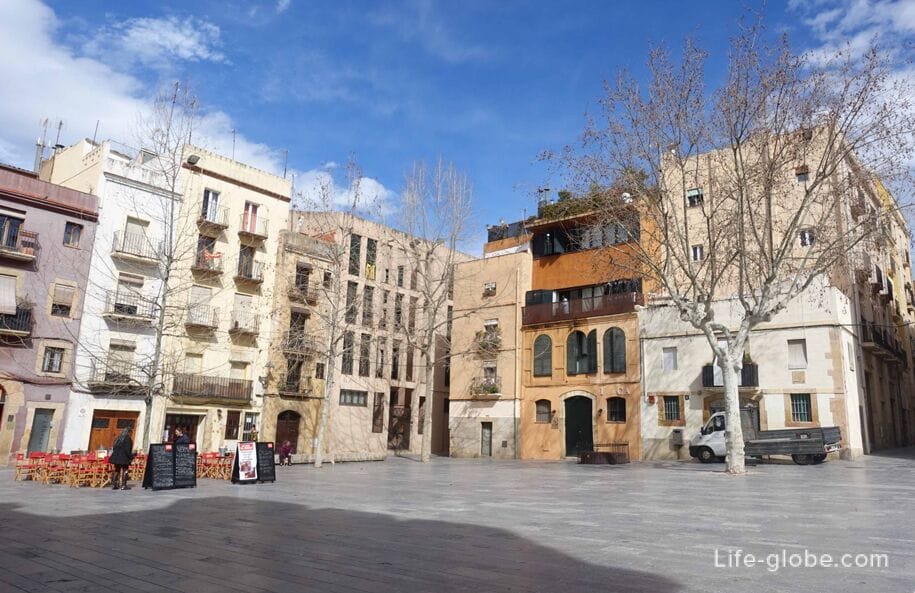
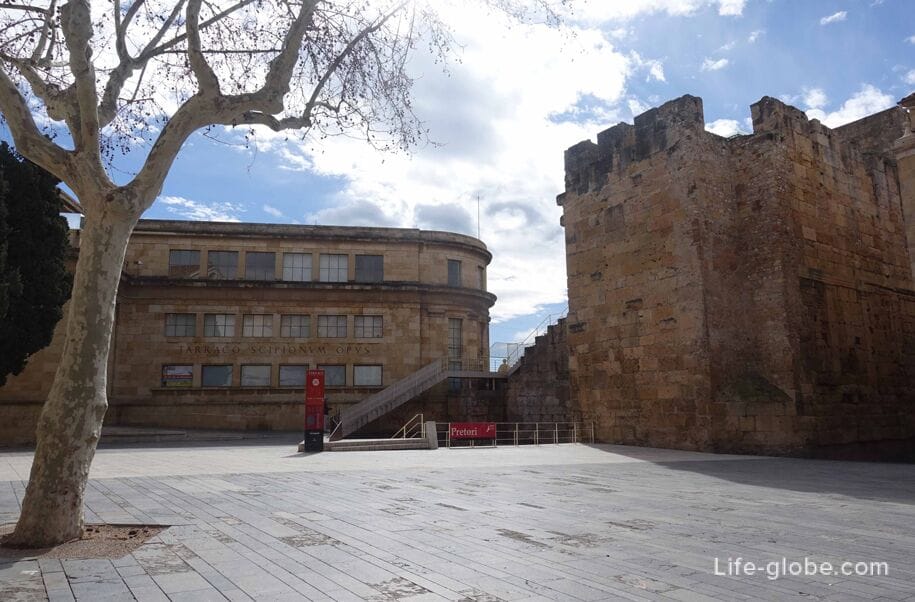
Close to the Royal square, from the side of the Rambla Vella, is one of the most known sights of Tarragona - the remains of the Roman circus, or the circus of Tarraco (Circ Romà) - the place of the once majestic dimensions, which hosted races for chariots, with a capacity of 20,000 people.
The circus had an approximate size of 325 meters in length and 100 to 115 meters wide, was built during the reign of the Emperor Domitian (81-96 ad) and was valid until the 5th century.
To our days there were also several tunnels of the Roman circus.
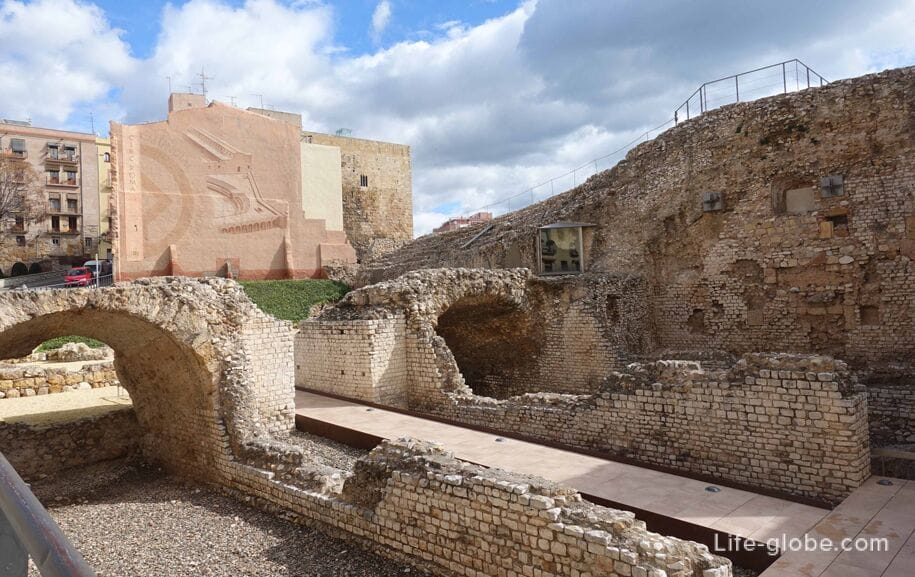
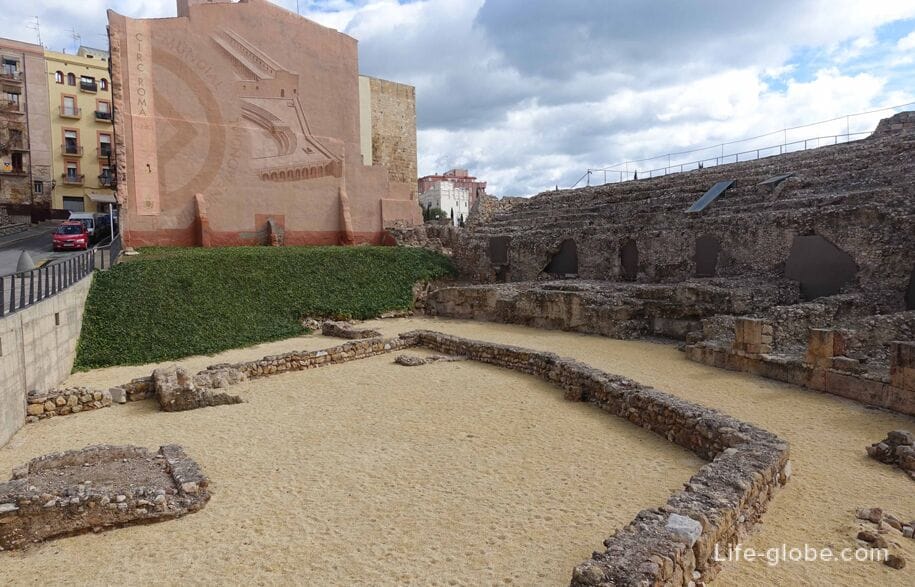
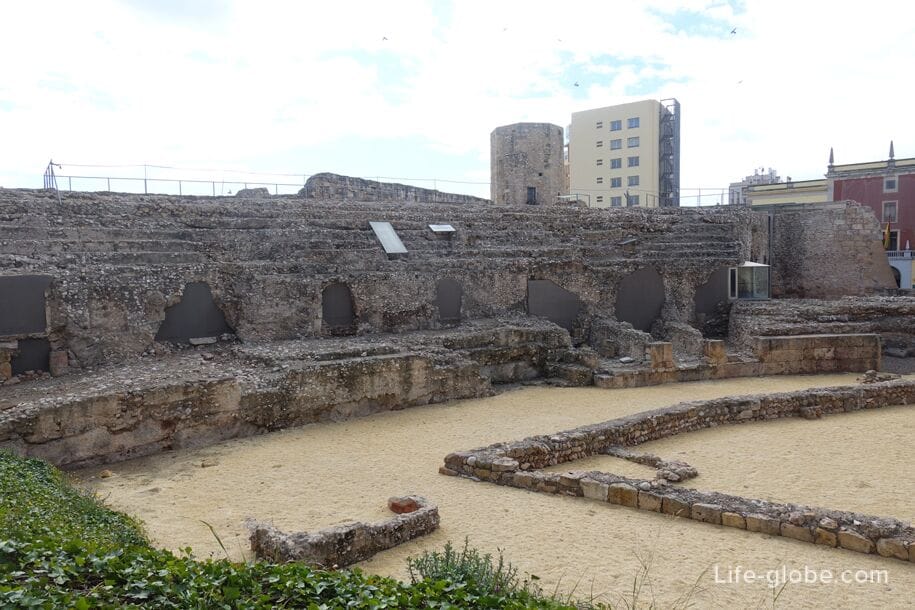
The above-mentioned objects of Tarragona's old town, from the tower of the Monks, belong to the so-called provincial forum of Tarraco (Provincial forum of Tarraco), covering an area more than 7.5 hectares, which is a large monumental complex built starting from 73 ad, by order of the Emperor Vespasian, and remained in operation until the beginning of the 5th century.
The forum was a leadership by the province and political and economic points of view. The place chosen for the construction of government institutions was the highest part of the city. The forum was divided into two terraces with the use of the uneven terrain.
On the territory of the forum was the administrative, religious and cultural (including the circus) building in the city of Tarraco. Thus the area of the forum included the circus, the place where now is located the street and the Cathedral of Tarragona and Plaza de La Font - the place where once stood a quarter of the Central part of ancient Roman arena circus.
For this reason the ruins of the buildings of the circus and the whole forum, you can see scattered here and there, in the old town of Tarragona.

To the East of the Royal square, is the so-called Jewish quarter formed by many narrow streets and alleys leading to fundamentally on the main square of the quarter, which is also called the place of the Jewish community.
To our days well preserved arch in Jewish quarter of Tarragona (Call jueu). From the evidence it can be concluded that the place used to be a synagogue, a school, baths and houses. The Jewish district is rooted in the 12th century and has gained maximum flourishing during the reign of the conqueror. In the first quarter of the 15th century, this place already existed important the combination of the Jewish and Christian world. In 1492, when the Semites were expelled from Spain, the neighborhood was full of Christians.
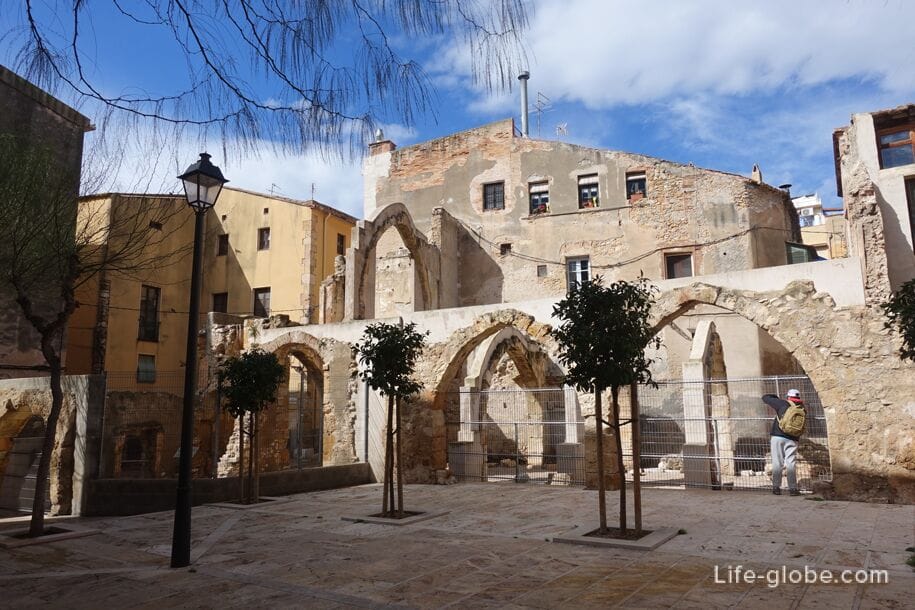
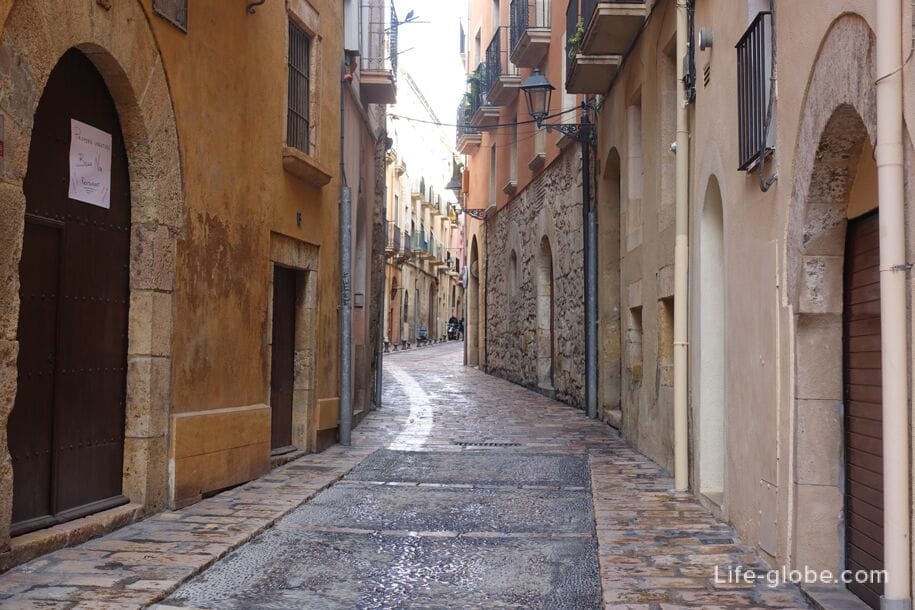
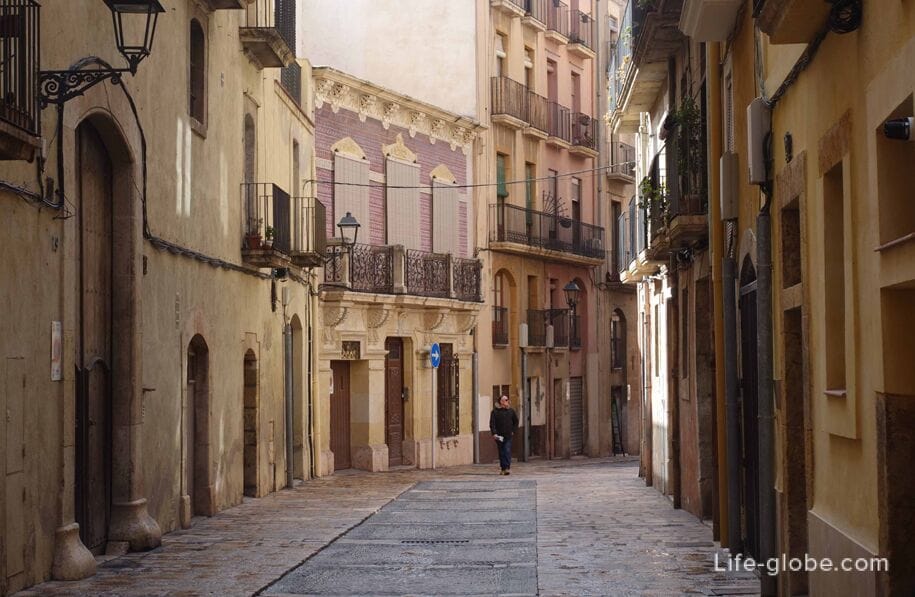
Rovella square (Plaça d'en Rovellat) and Forum (Plaça del Fòrum) with the remains of the Roman walls and the surrounding streets. It is close to the Museum of modern art (Museu D'art Modern De Tarragona).
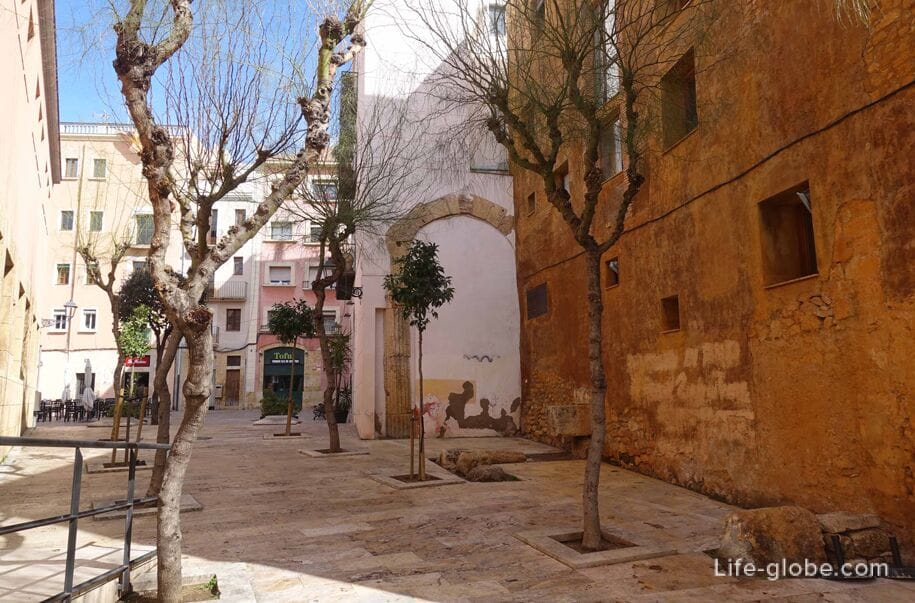
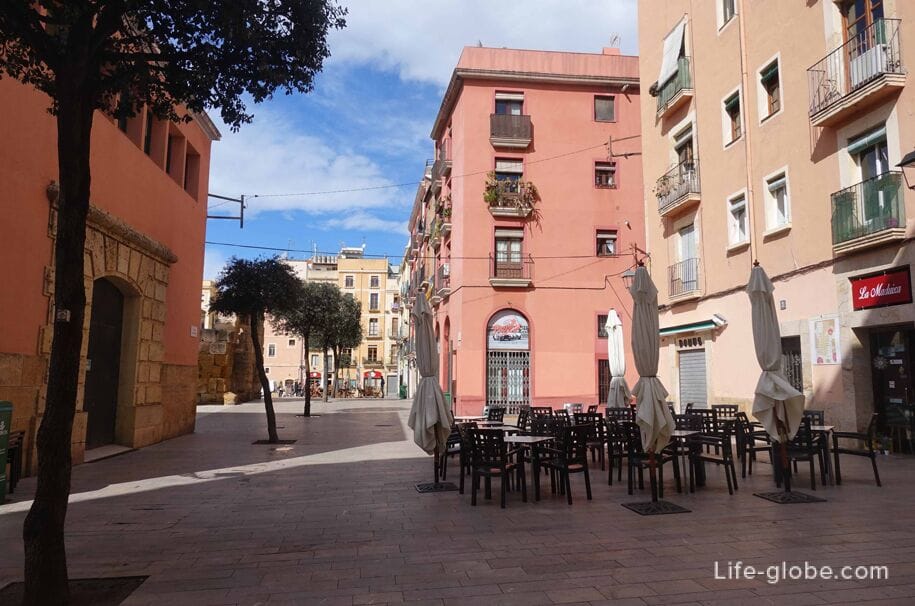
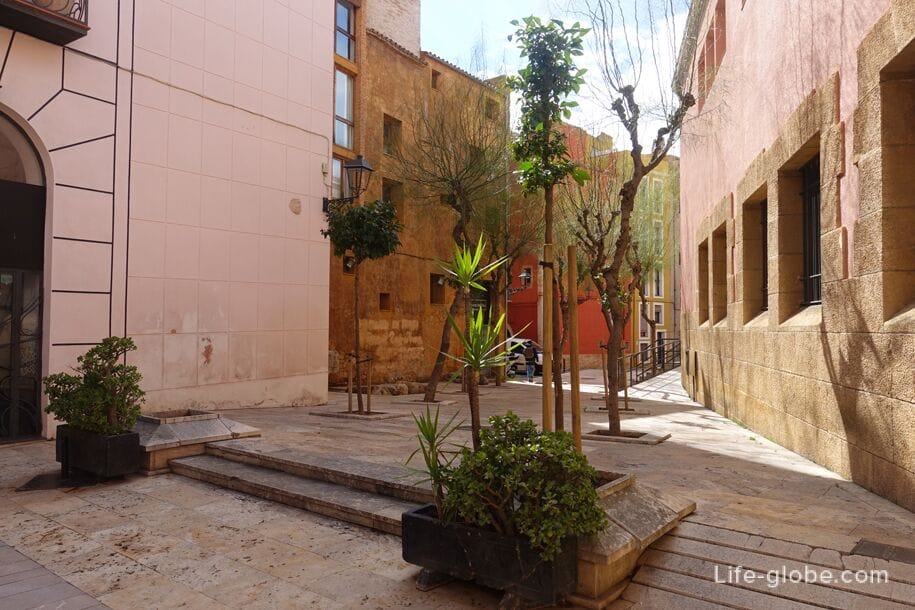
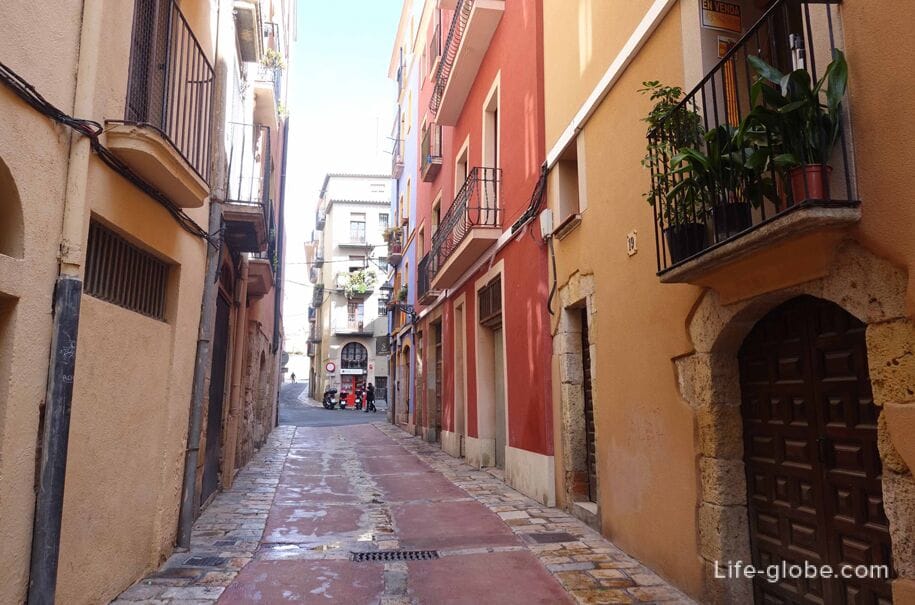
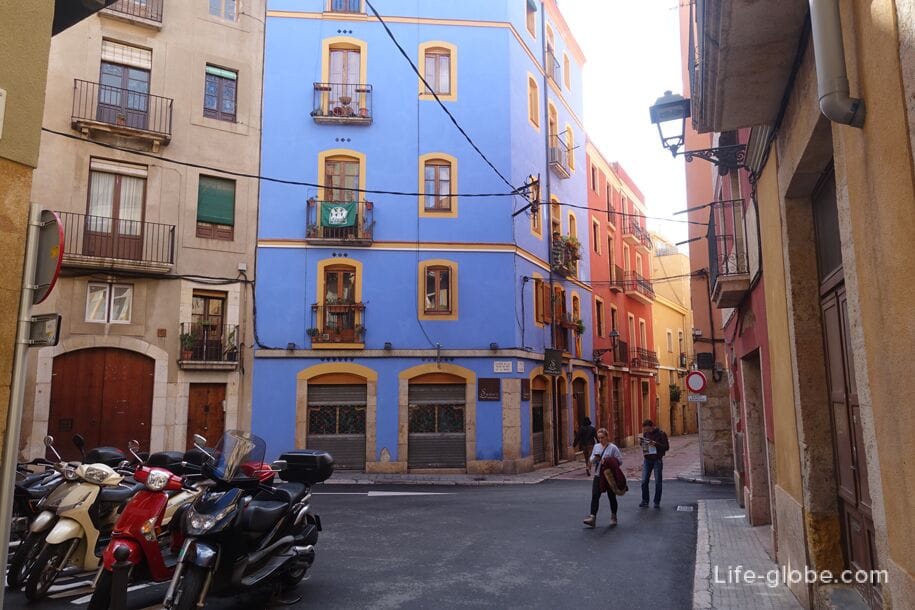
The area of the Peasantry (Plaça de la Pagesia) where the Church is 12th-century Sant Llorens (Església de Sant Llorenç). This Church is protected as a cultural site of local significance, and stands as one of the oldest Romanesque churches in the city (in the interior of the remains of the two original columns), although it has undergone changes, and mainly the current building dates back to the 14th century.
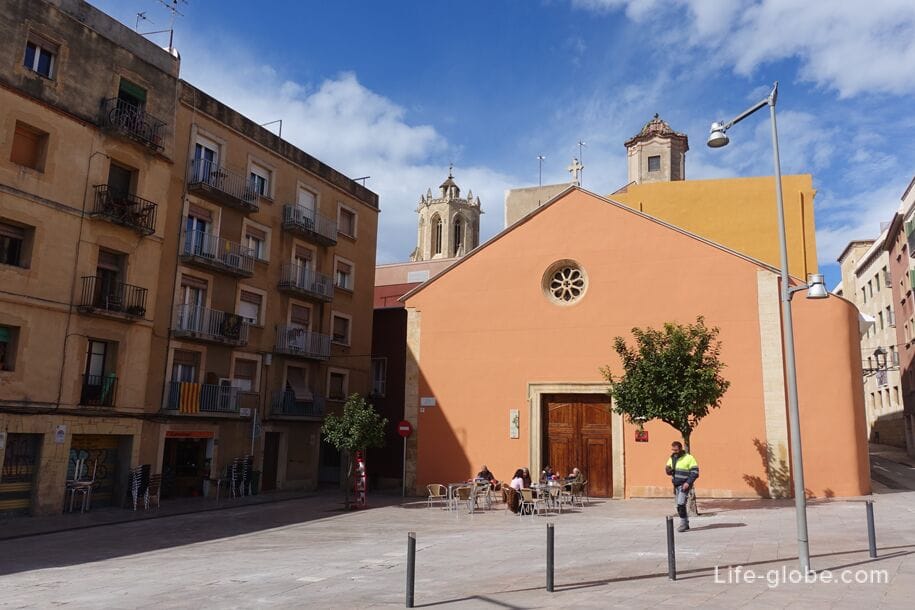
Nearby is attracting the attention of the building of the State University of Rovira and Virgili (Universitat Rovira i Virgili). The University is an educational and research institution with centres in Tarragona, Reus, Vila-Seca, Tortosa and El Vendrell.

Also interesting is the small chapel of Santa mudgee (Capella de Santa Magi), which leads to street del Portal del Carro. St mudgee was a hermit from the 3rd century, subjected to martyrdom by the Romans in the early fourth century. He is the patron of Tarragona.
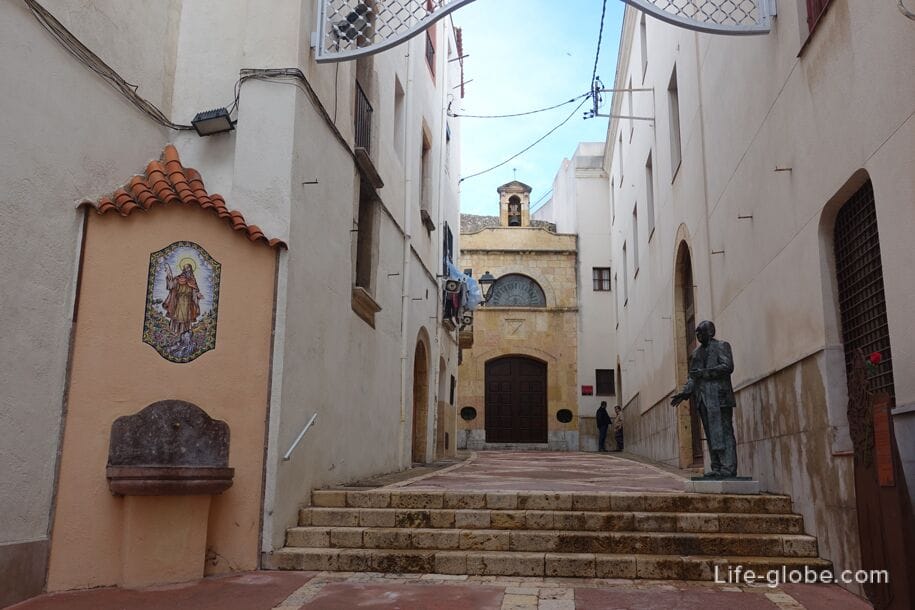
The house on the street Portal Affairs Carros
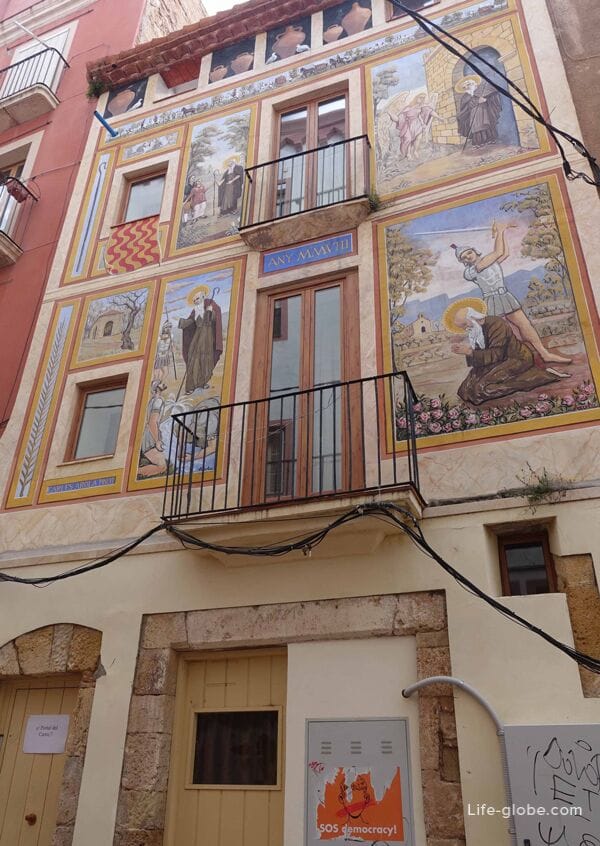
The Central ornament of Tarragona's old town stands the monumental Cathedral of Tarragona (Catedral de Tarragona) - the heart of old Tarragona.
The Cathedral dedicated to Saint Thekla, and combines Romanesque and Gothic styles. Since 1905, the Tarragona Cathedral is a national monument of Spain.
The Cathedral is the monastery with a courtyard and covered gallery bypass (cloisters), enclosing the courtyard on all four sides. Read more about the Cathedral of Tarragona...

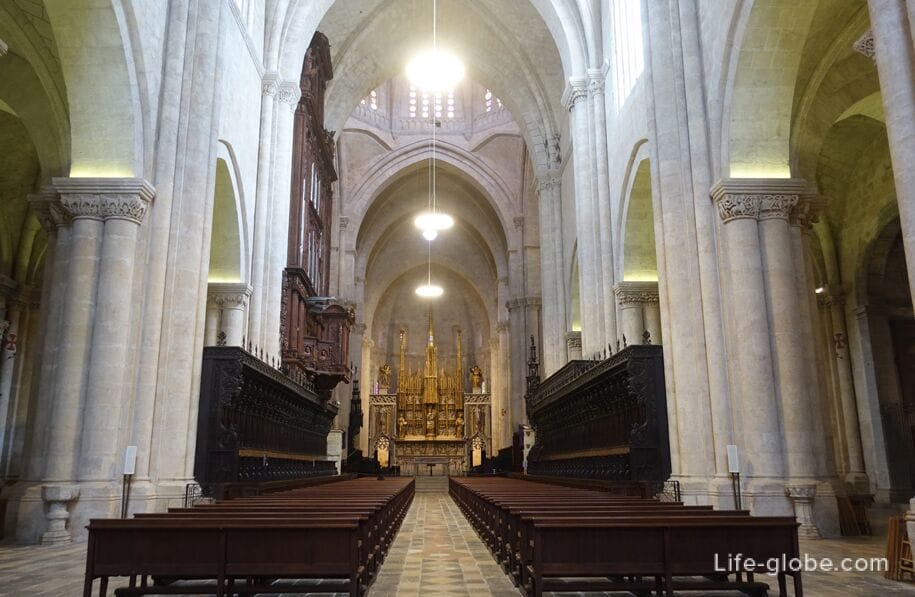
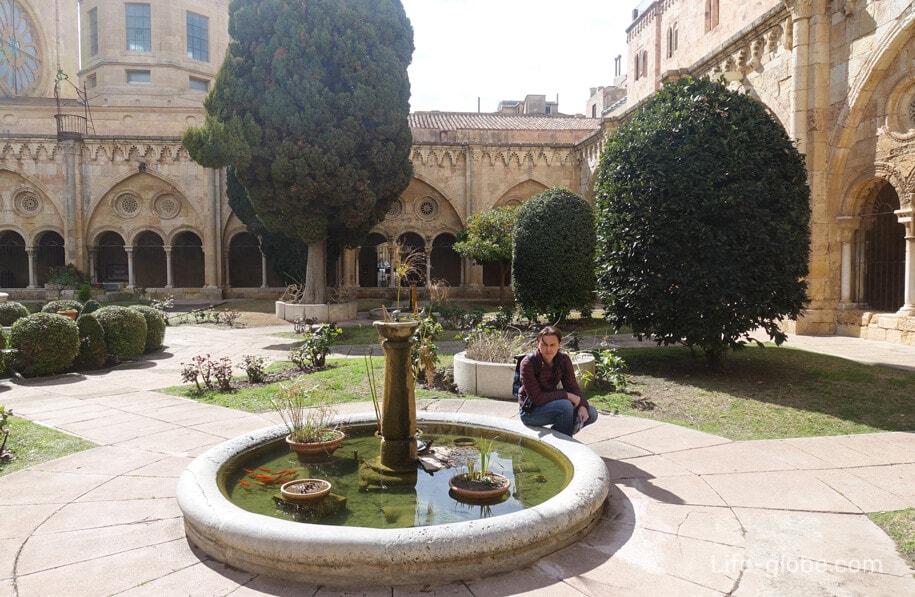
If you bypass the Cathedral in a circle, you can see some of the sights of the old town:
- the historical monument of the medieval hospital de Sant Pau and Santa Tecla (Hospital De Santa Tecla);
- biblical Museum (Museu Bíblic Tarraconense);
- neoclassical Church of Iglesia (Esglesia De L Ensenyanca), 18th-century part of the monastery Lestonnac. Since 1885, with a new alignment of streets and changes of slope, the Church was a wooden staircase giving access to the lobby. Doorway of the Church is topped by a triangular facade;
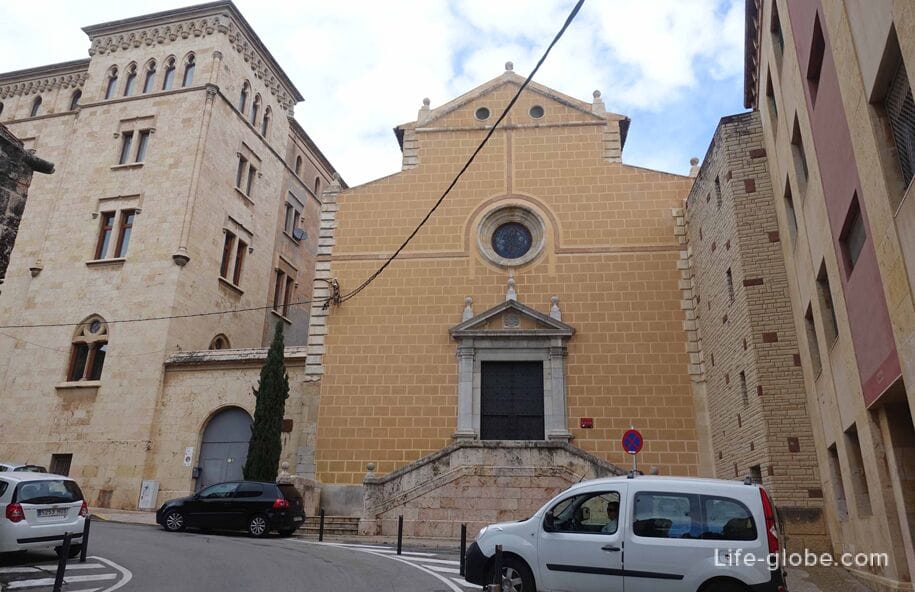
street Sant Pau (Carrer de Sant Pau) on which the Seminary ("El Seminari" Centre Tarraconense), based in a renovated building of the Papal Seminary. The present building was built in 1883 as a monumental neo-Gothic complex built around two monasteries and focused around St. Paul's chapel (Capella De Sant Pau Romàntica) Dating from the first decade of the 13th century;
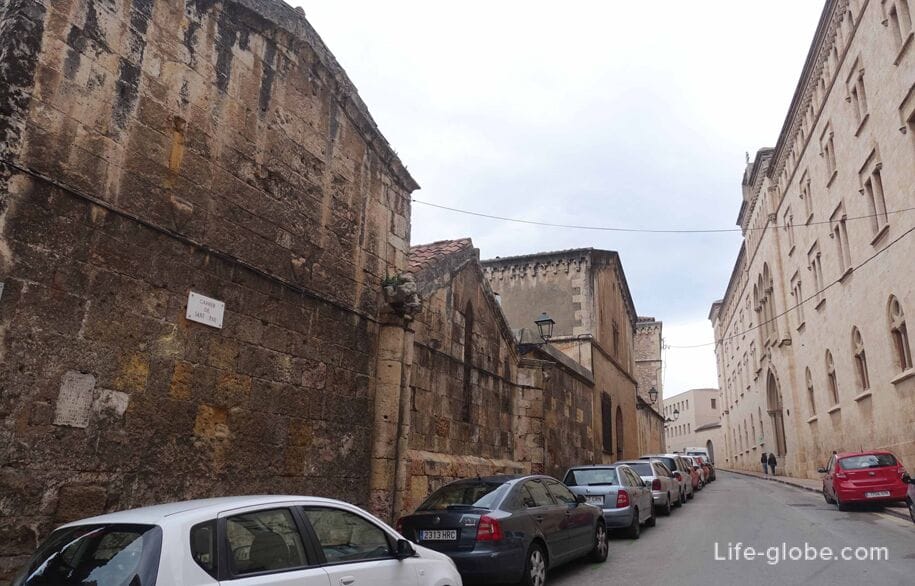

monument to the Apostle Paul;
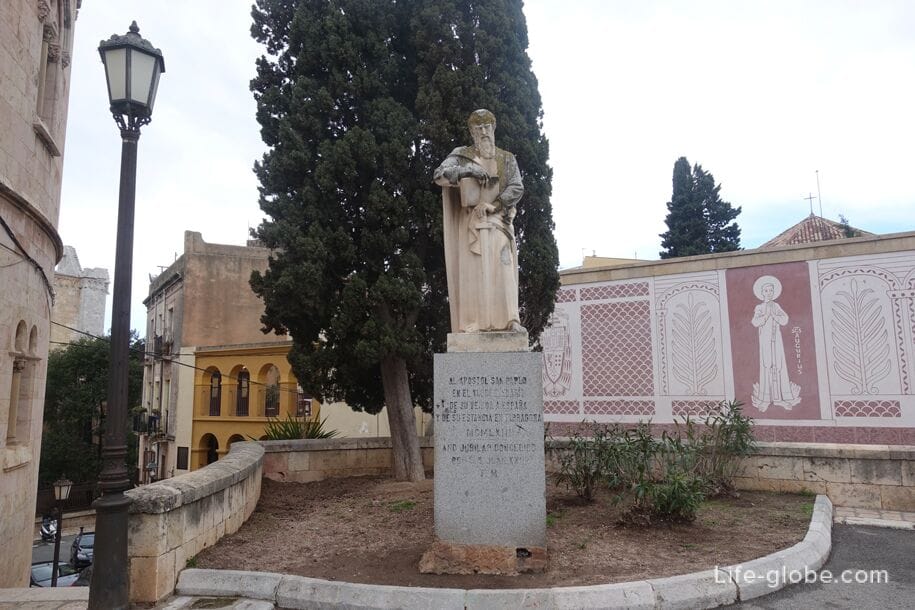
- the remains of the forum.

Near the steps leading to the main entrance to the Cathedral, lies a small area of the forest of Coles (Plaça de les Cols) where from 1732 to 1935 he worked market. Especially notable in the area of the Gothic arch of the 14th century.

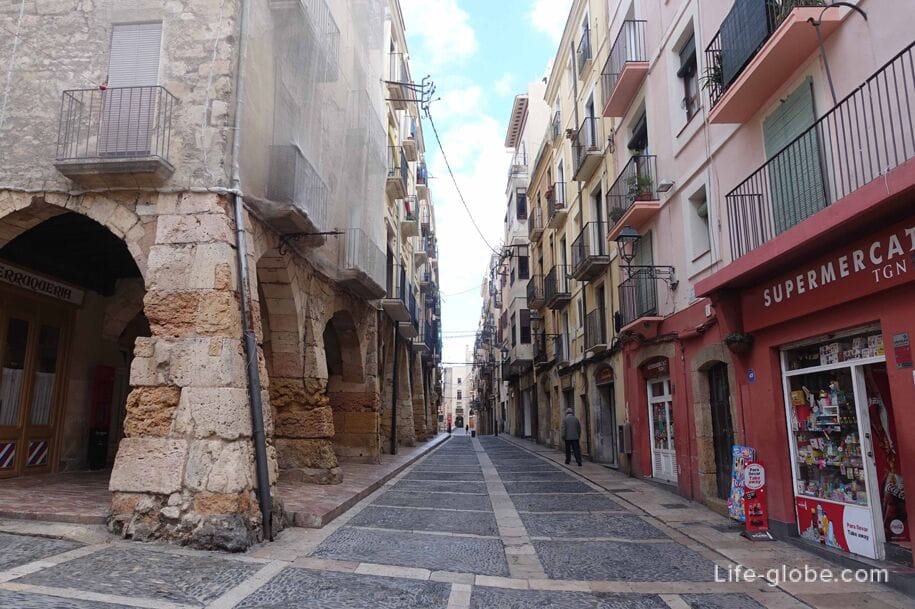
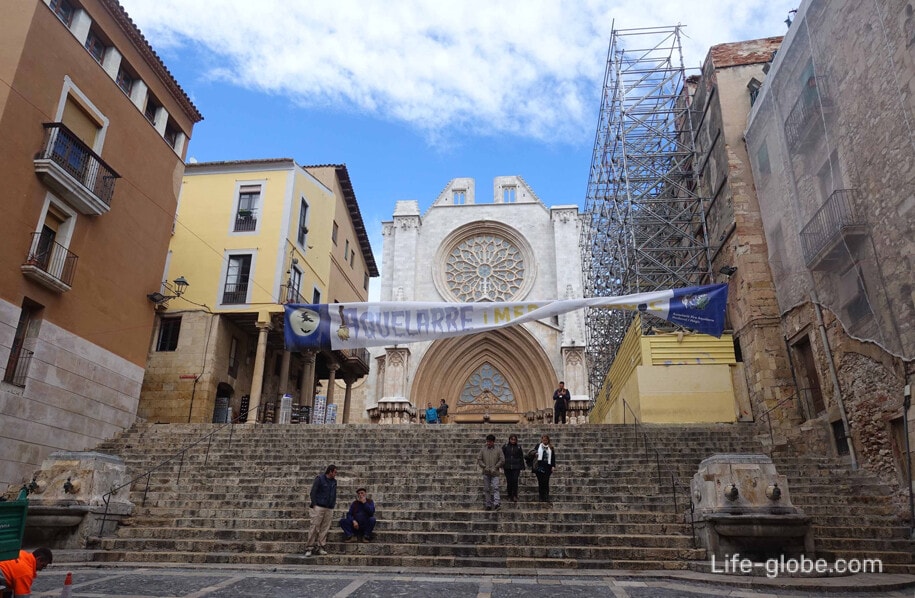
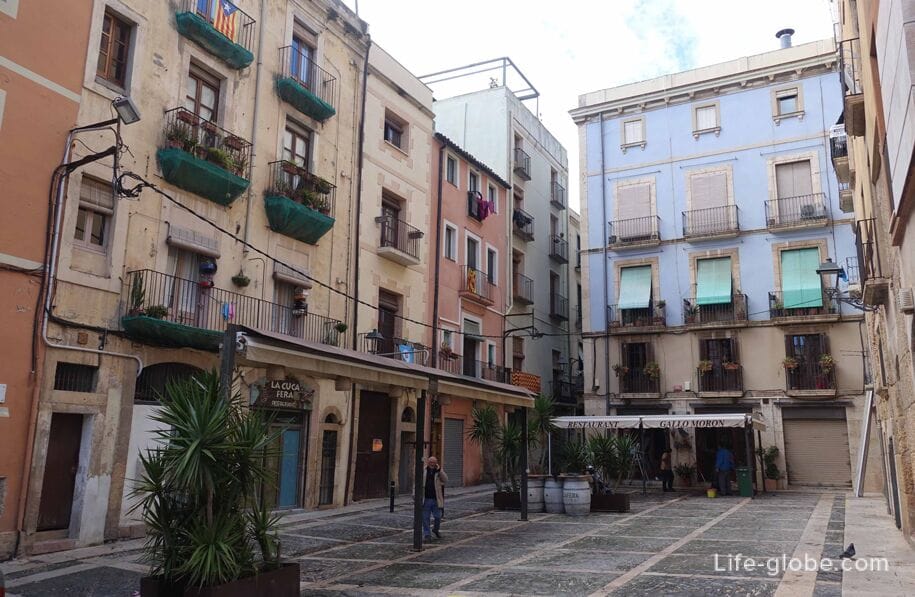
From Plaza de Les Coles down the Major street (Carrer Major) - the main and the busiest street of the upper town of Tarragona. Along the street shops and souvenir shops.
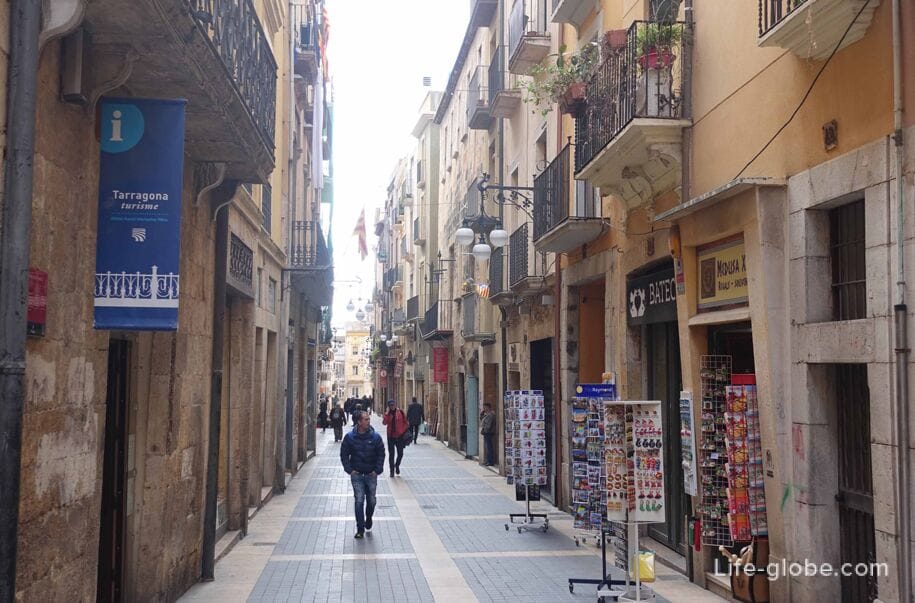



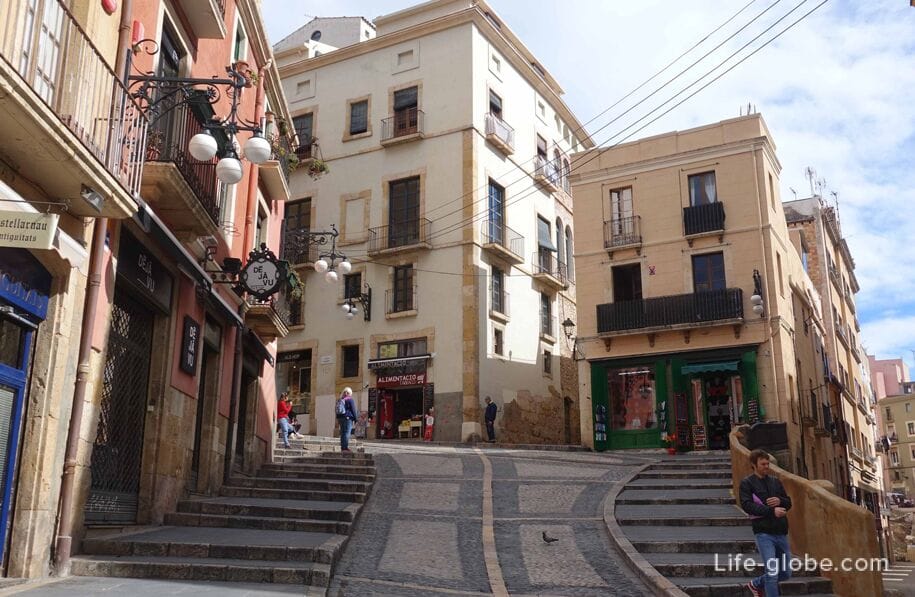
Near Major streets, the square Setassoc (Plaça dels Sedassos), are just two attractions:
with fraudulent (fake) facade. The feature of the house that a blank exterior building wall is painted in such a way that the impression of the stormy life of the residents of the building. The façade was painted in 1995 painter Carles Arola, who portrayed a view of Tarragona at home in the tradition of the 19th century;

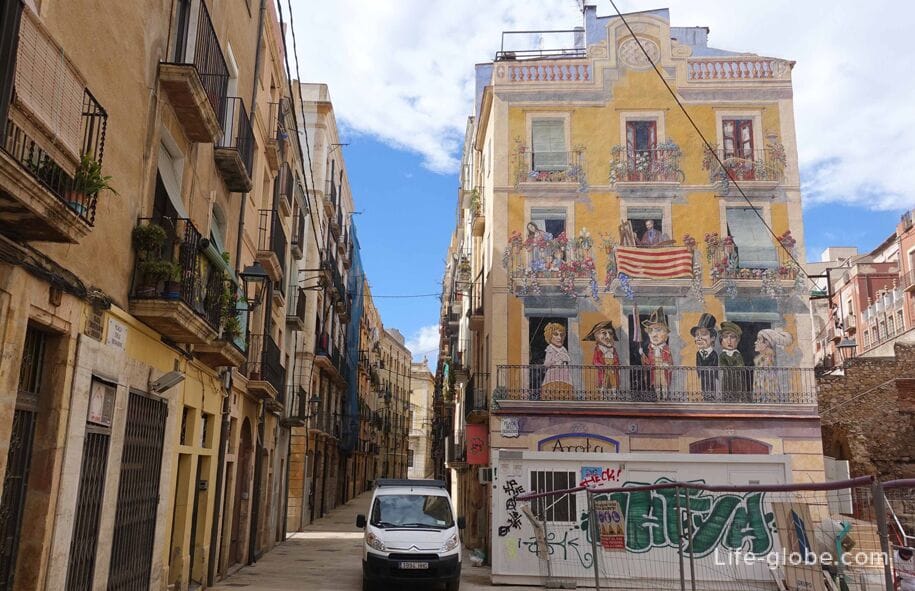
- the remains of the Roman circus.
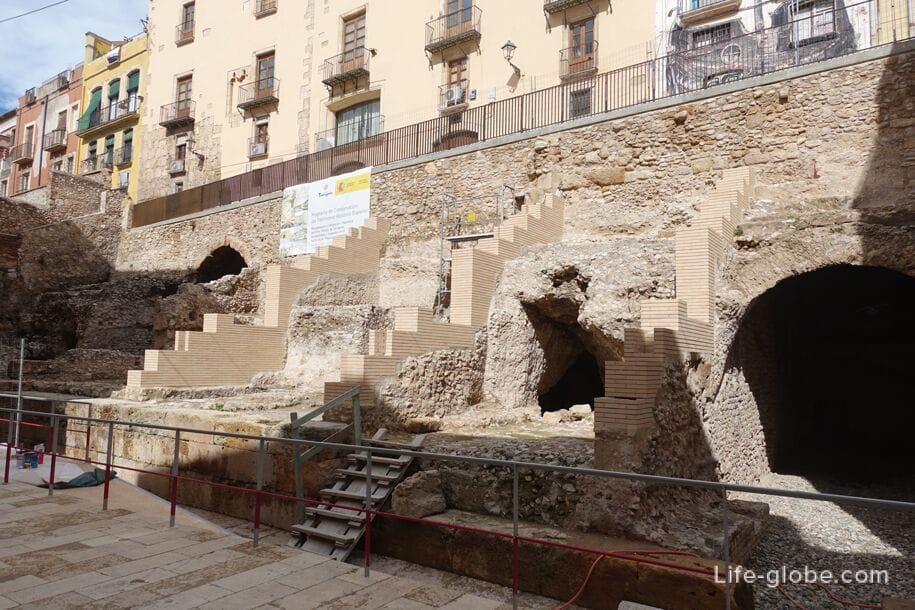
Major street flows smoothly into the street Drop of Mercy (Baixada de la Misericòrdia), which, in turn, howl, leads to the main and largest square of the old Tarragona plaça de La Font or Fountain square (Placa De La Font).
The area of Font located on the place where was once part of the ancient Roman arena circus. After the Roman era, it was almost abandoned, he was called "the paddock" and was used to caring for livestock. Later the area became a daily market, which was until 1915.
In 1363 the Archbishop Pere de Clesceri built this place well, which was also called "source". In 1827, Pierre Verderol and sculptor Vicente Roig has built a monumental fountain. Hence the name square - Fountain Plaza.
Currently, the Plaza de La Font is a pedestrian zone and has an elongated rectangular shape. On three sides of the square multi-colored historical building on the first floor where there are cafes and restaurants with outdoor tables, and the centerpiece of the square stands the neoclassical city hall building - the town hall of Tarragona (Tarragona Town Hall). Read more about square Font in Tarragona...


The North wall of the upper Tarraco remarkable:
- Arches Volta del Pallol (Volta del Pallol), who served as part of the Western administrative area of the Provincial forum of Tarraco, where in Roman times, apparently, was the long gallery, which was located behind the entrance and serves as a support for the second floor.
In 1462, because of the unsafe buildings located outside the region, the Dominicans moved to Palol his monastery, but in 1522 the building became a warehouse. From 1646 to 1693 years, the building was again used as the Dominicans the Church. From 1693 the storage returned in the property of the municipality, who in 1780 used it as a lumber yard, and later years as a warehouse of the municipal brigade.
Name Palal comes from the fact that in the second half of the 16th century in the walls of the building was a granary to store wheat, flour and bread, and carrying out functions of a public house for buying and selling of grain and flour. This function Palol gave the name both to the building and the entire surrounding area - the square Plaça del Pallol.
At present, this is the exhibition hall, which presents a scale model of the Roman town of the 2nd century BC;
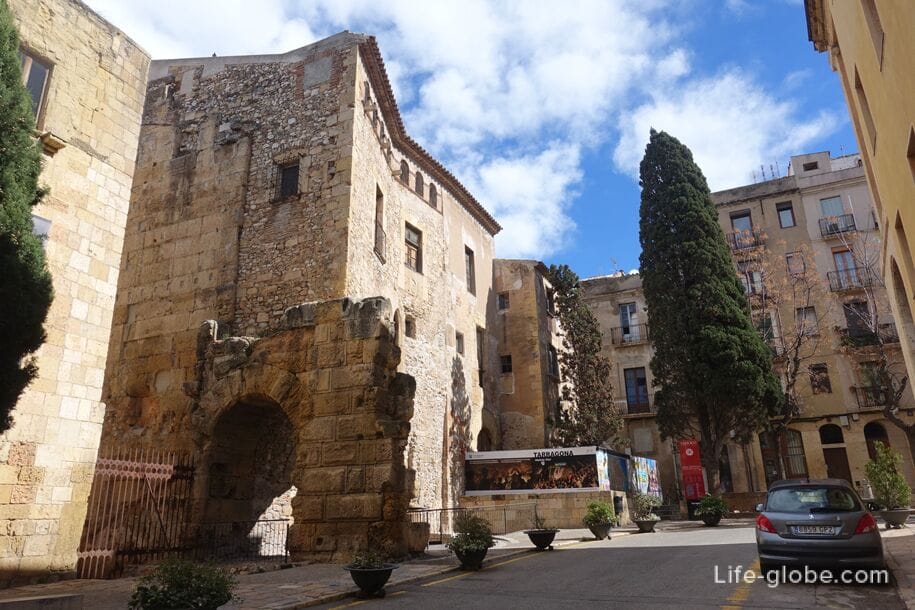
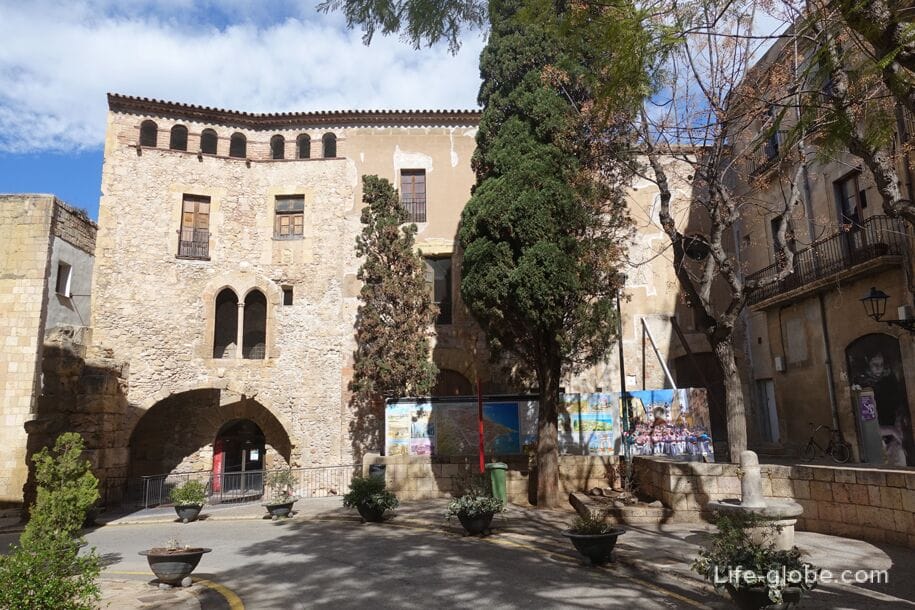
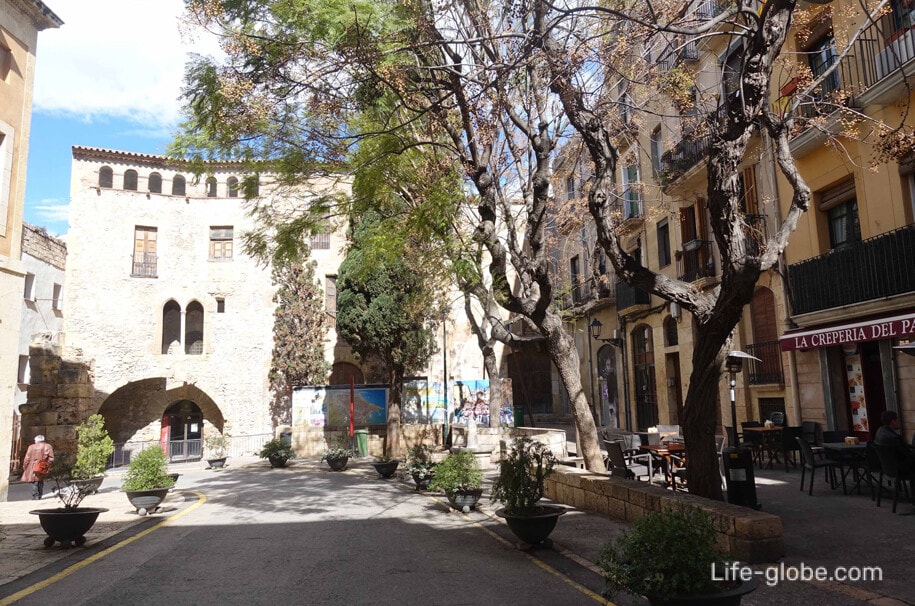
- house-Palace Castellarnau (Casa Castellarnau). Documentary origin of Kasa Castellarnau dates back to the early 15th century. However, during the excavations was documented a number of earlier structures of late antiquity from 12th to 14th century.
In 1527 the house was the property of Francesca de Soldevila.
In 1542, the building has undergone a series of transformations, together with houses Exert and Montoliu to adapt to the Royal residence during the visit of king Carlos I in Benidorm.
In 1764, Carlos de Castellarnau bought the house to establish in its walls his residence. Similarly, the family of Castellarnau acquired two annexed houses, to be able to expand. The new construction project was entrusted to the Barcelona architect Josep Pratu and Delorte.
Since 1954, the building is in municipal ownership. At that time the building was reconstructed with the numerous modifications of the original, resulting in the current state of the building.
At the present time within the walls of the Palace is a Museum. In the interior of the house was preserved architectural structures from different periods. On the ground floor is a series of pointed arches, dated to the fourteenth and fifteenth centuries. There are a patio and a staircase with columns and Gothic capitals. There are several rooms with furniture from the 18th and 19th centuries. The most symbolic space is the ballroom, whose ceiling is decorated with paintings of mythological themes, executed Provencal painter Josep Bernat Playeram at the end of the 18th century;

the walls, which was chosen and where nesting pigeons, and arched gates portal del Roser (Portal del Roser) - one of the entrances/exits in the walls of the former Tarraco.
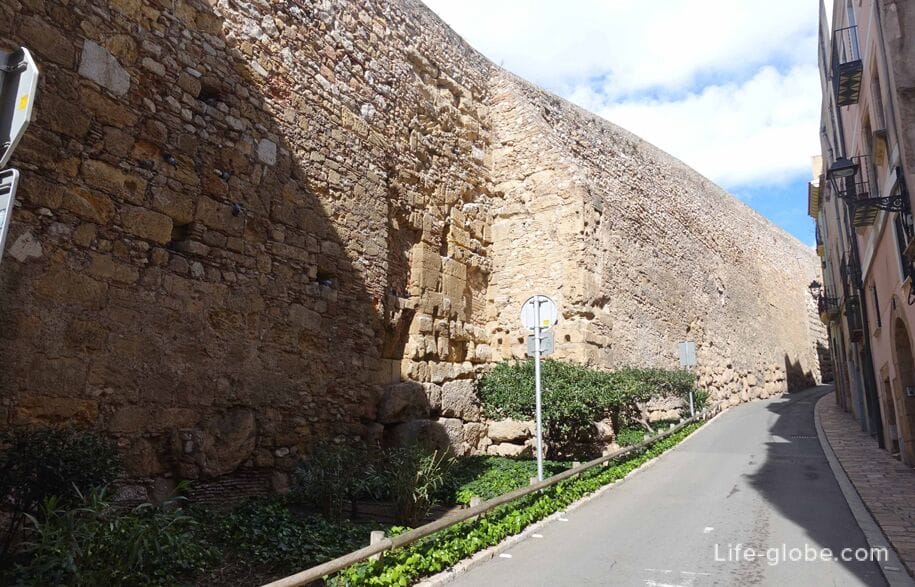
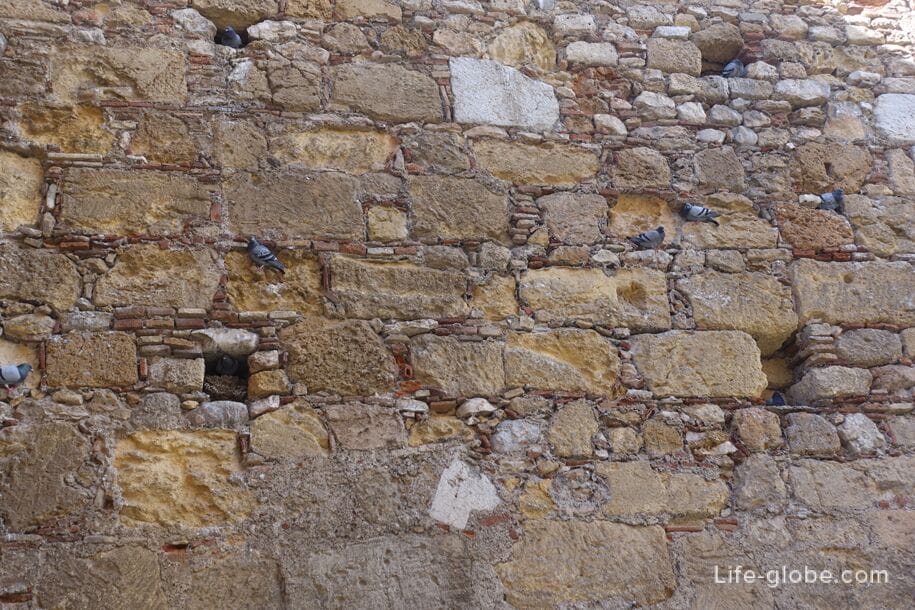
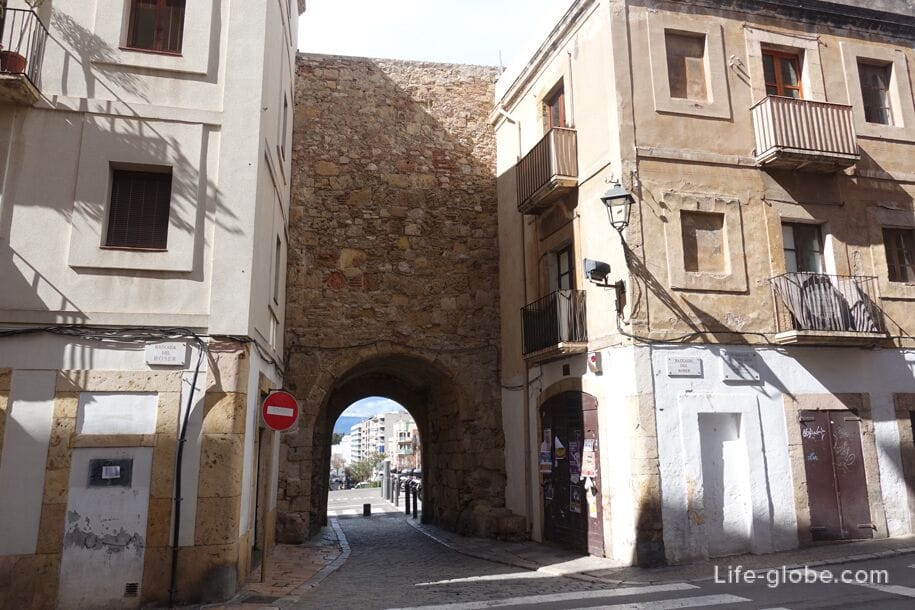
Beyond the old town, in the above-mentioned gate of Roser find themselves on the streets of the Roman Empire (Via de l Imperi Romà), which runs alongside the Roman wall and decorated with tile and stone mosaics. The main attraction of the street is a Roman column (Columna Romana).

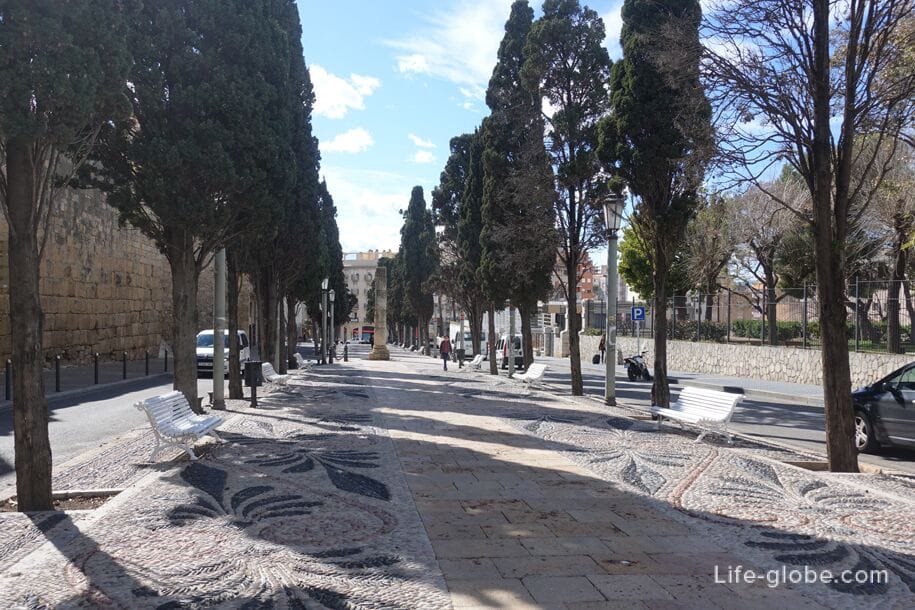
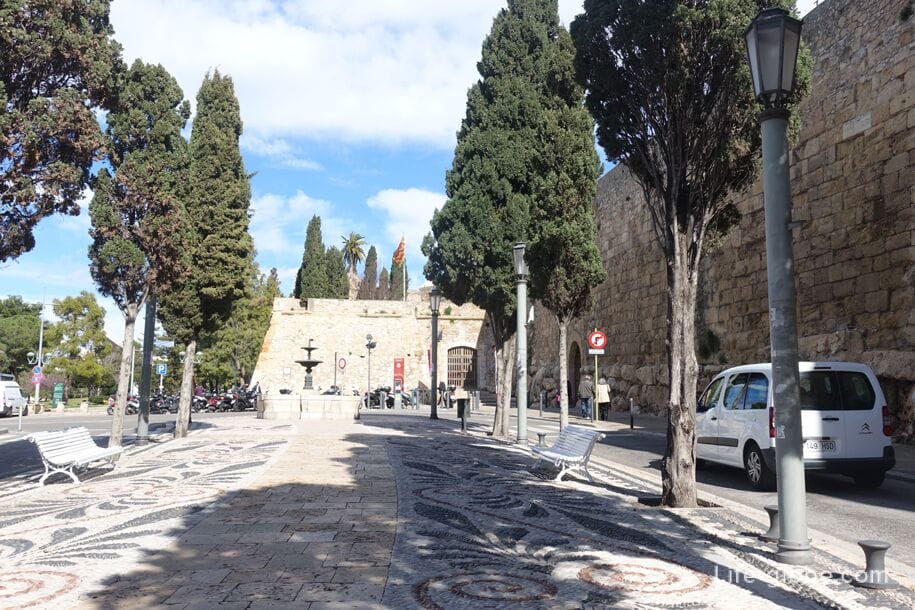
Going down the street to the Empire of Rum, again go out to Las Ramblas Vella, which is the San Agustin Church (Església de Sant Agustí) and the parish of St. Francis of Assisi (Parròquia Sant Francesc d Assís).
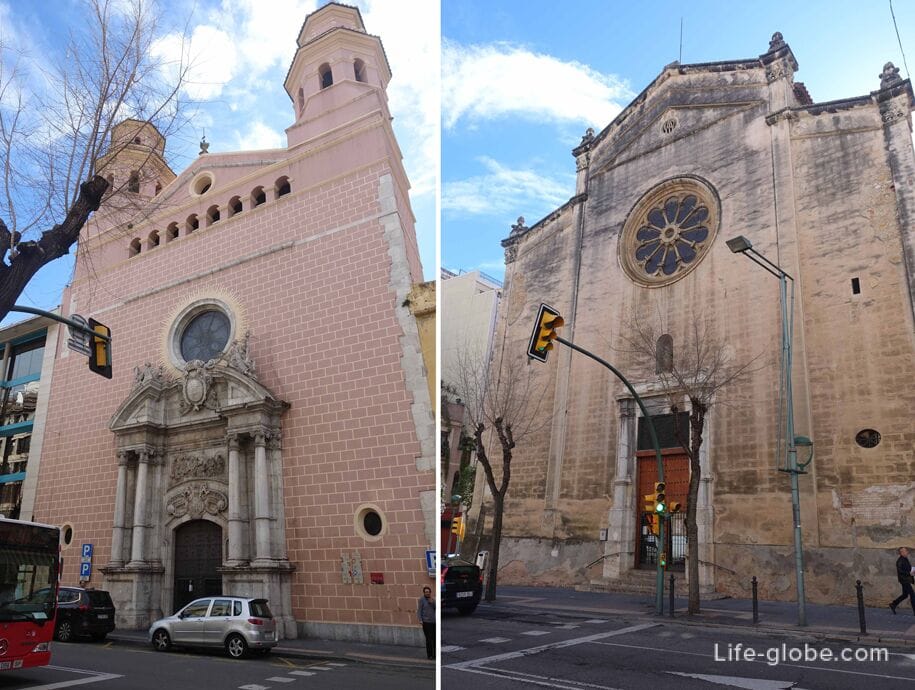
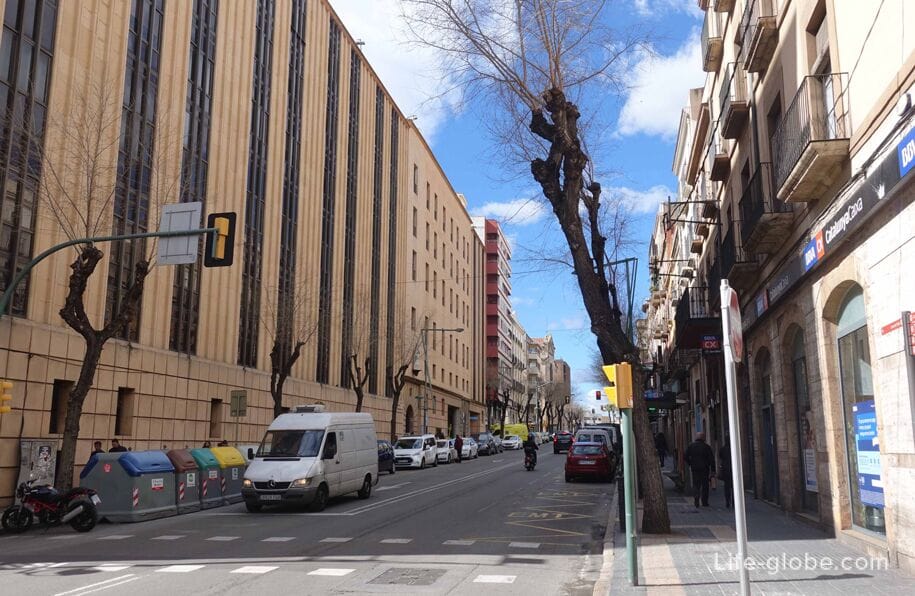

At the beginning of the Rambla street of the Old square, the UNESCO, close to Nusa Imperial Tarraco, starts its route tourist train in Torrevieja.
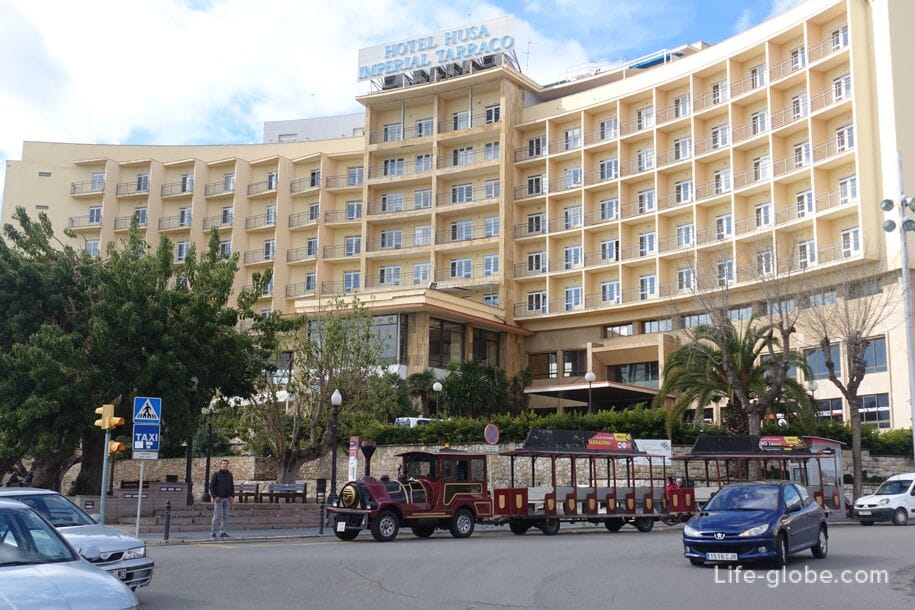
Tarragona old town (Part Alta) on the map
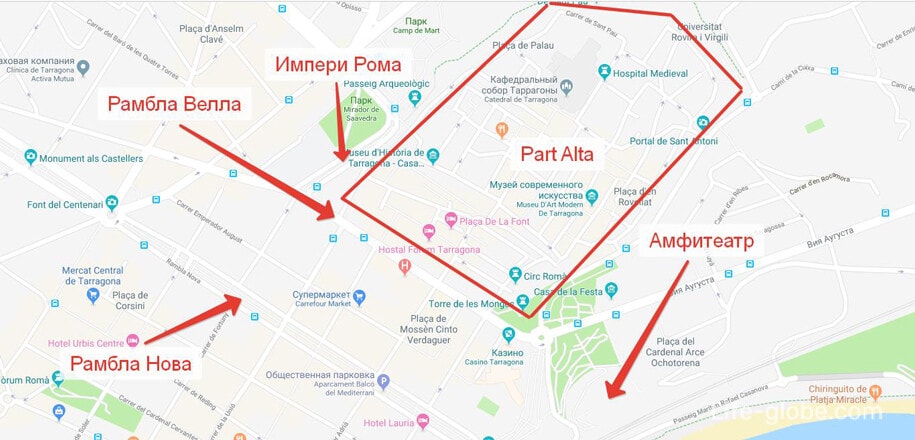
All accommodation facilities in the old town of Tarragona (hotels, apartments, guest houses, hostels, etc.) can view and book here








